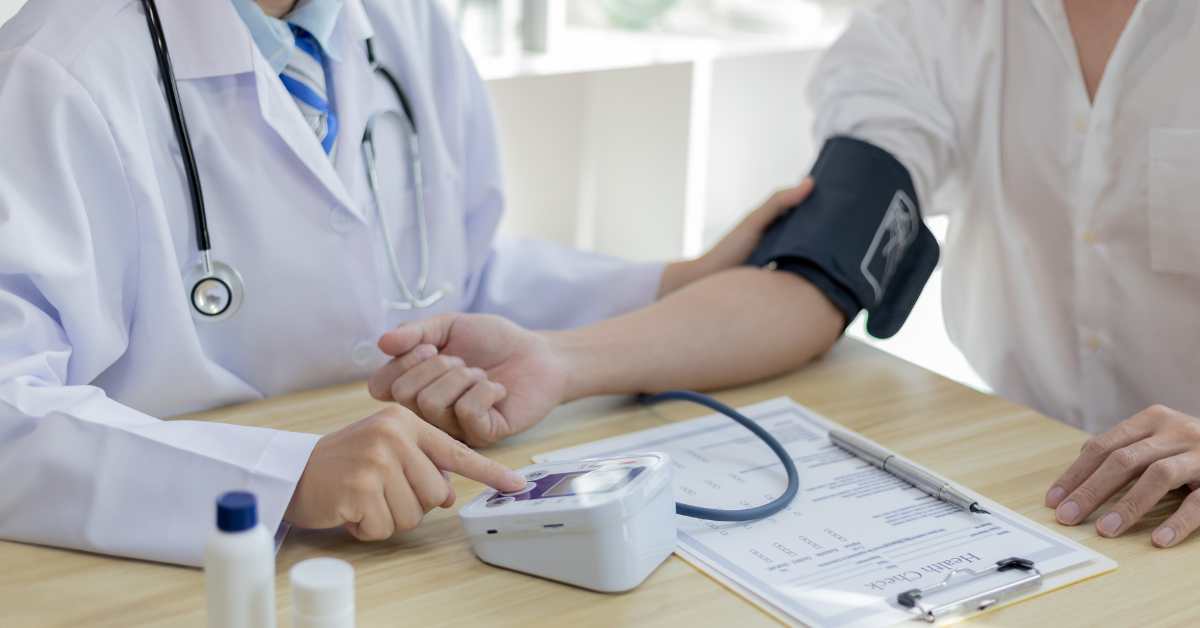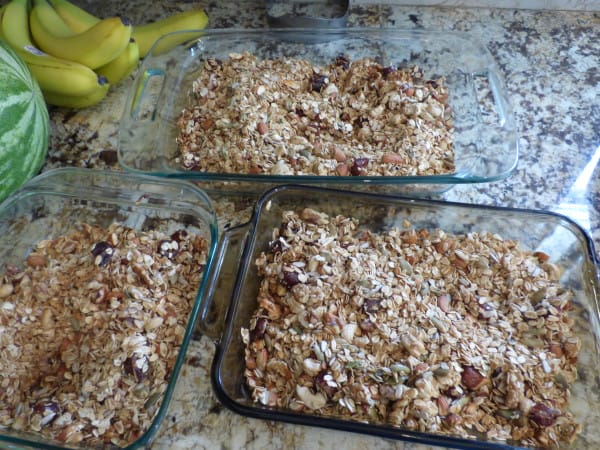Food poisoning can leave you feeling miserable and drained, and unfortunately, it is quite common. Food poisoning can cause nausea, vomiting, diarrhea, stomach cramps, and fever. While most cases resolve with rest and care, it’s important to know how to manage symptoms, when to call a doctor, and how to heal and reestablish gut health.
This article shares home remedies for managing food poisoning and information about when to seek medical attention as well as information about food poisoning in vulnerable populations, such as pregnant women and babies.
What Causes Food Poisoning?
Food poisoning occurs when you consume food or water contaminated with harmful microorganisms or toxins. Common causes of foodborne illness include (1,2):
- Bacteria: such as Salmonella, E. coli, Listeria, and Campylobacter
- Viruses: such as Hepatitis A and Norovirus
- Parasites: such as Giardia or Toxoplasma gondii
- Toxins: produced by bacteria like Staphylococcus aureus or Clostridium botulinum
Contamination can occur during food production, storage, preparation, or handling (3). Food poisoning can affect anyone, but certain factors may make some people more susceptible to food poisoning. These factors include:
Immune Health
A strong immune system is more effective at managing exposure to the contaminants that can cause food poisoning (4).
Gut Barrier Integrity
A leaky gut barrier may allow more bacteria and undigested food particles to enter the bloodstream (5).
Stomach Acidity Levels
Stomach acidity varies from person to person, and a more acidic stomach is less hospitable to pathogenic microbes. Some factors that affect stomach acidity include age, overall digestive health, and some medications, like proton pump inhibitors (4).
Gut Microbiota
A diverse and healthy gut microbiome is important for overall health (5). Antibiotic use, stress, and poor diet can disrupt the balance of the gut microbiome (5).
Food poisoning is quite common in the United States, with the Centers for Disease Control and Prevention (CDC) estimating around 48 million cases each year (6). The vast majority of food poisoning cases are mild and can be managed at home; however, the CDC reports that each year in the U.S. there are about 128,000 hospitalizations and 3,000 deaths related to food poisoning (6).
What Are the Symptoms of Food Poisoning?
The symptoms of food poisoning can vary but usually include some or all the following (7):
The below symptoms are considered severe and warrant a call to the doctor:
- Bloody diarrhea
- Diarrhea that lasts more than 3 days
- Moderate to high fever (over 102°F in kids and adults), or a fever over 100.4°F in an infant under three months old
- Vomiting so often that you cannot keep liquids down
- Signs of dehydration, which include not urinating much, a dry mouth and throat, and/or feeling dizzy when standing up
- Suspected food poisoning during pregnancy, even if the symptoms are not severe
The timeline from exposure to the pathogen to the start of symptoms can vary, but below are some common timelines and symptoms associated with the most common causes of foodborne illness, as per the CDC (7).
| Germ | Common Symptoms | Time to Symptoms | Possible sources of infection |
| Staphylococcus aureus | Nausea, vomiting, stomach cramps, diarrhea | 30 minutes to 8 hours | Deli meats, pastries, puddings |
| Vibrio | Watery diarrhea, nausea, stomach cramps, vomiting, fever, chills | Within 24 hours | Raw or undercooked shellfish, particularly oysters |
| Clostridium perfringens | Diarrhea, stomach cramps (vomiting and fever uncommon) | 6 to 24 hours | Foods cooked in large batches and held at unsafe temperatures |
| Salmonella | Diarrhea (can be bloody), fever, stomach cramps, vomiting | 6 hours to 6 days | Raw or undercooked animal products, fruits/vegetables, and contact with certain animals, like reptiles and backyard poultry |
| Norovirus | Diarrhea, vomiting, nausea, stomach pain (fever, headache, body aches possible) | 12 to 48 hours | Leafy greens, fresh fruits, shellfish, contaminated water, infected people, and contaminated surfaces |
| Clostridium botulinum (this is the reason why we recommend babies under age 1 do not consume honey) | Difficulty swallowing, muscle weakness, double vision, slurred speech, drooping eyelids, difficulty moving eyes | 18 to 36 hours | Improperly canned or fermented foods, honey |
| Campylobacter | Diarrhea (often bloody), fever, stomach cramps | 2 to 5 days | Raw or undercooked poultry, contaminated water, and contact with infected pets |
| E. Coli | Severe stomach cramps, diarrhea (often bloody), vomiting (may cause hemolytic uremic syndrome in severe cases) | 3 to 4 days | Raw or undercooked beef, vegetables (e.g., lettuce), sprouts, contaminated water |
Note: Looking at this chart can make it seem like there are no safe foods! Please remember that most cases of food poisoning are preventable with proper food handling, cooking, and storage techniques. While it’s true that certain foods are more likely to carry pathogens, following safety guidelines—such as washing your hands, cooking foods to safe temperatures, and avoiding cross-contamination—can significantly reduce the risk of illness.
Home Care Remedies for Food Poisoning
Most cases of food poisoning are self-limiting and can be managed at home with some TLC (6). The primary goals of home care for food poisoning are to stay hydrated and support your body’s recovery. Here are some practical ways to manage mild food poisoning at home:
1. Hydrate
Diarrhea and vomiting can quickly deplete your body of fluids and electrolytes, increasing the risk of dehydration (8).
- Sip on water, coconut water, or electrolyte drinks.
- Bone broth is also an excellent option as it replenishes minerals while soothing the stomach.
- Avoid sugary sodas or caffeine, as they can worsen dehydration.
- Popsicles are a great option for increasing hydration during gastrointestinal upset.
If fluids cannot be kept down for more than 12 hours for adults, 6 hours for children, and 4 hours for infants – or if signs of dehydration such as dry mouth, dark urine, or dizziness are noted – seek medical care.
Stay on top of hydration with these recipes:
- Dr. Green Mom’s Homemade Electrolyte Drink Recipe
- Dr. Green Mom’s Healthy & Hydrating Popsicle Recipes
2. Take Activated Charcoal
Activated charcoal is a natural remedy that can be used to help absorb toxins and poisons in the digestive tract (9). It is particularly effective for removing toxins like opiates, salicylates, phytochemicals, and many other medications (9)—especially when taken within one hour from ingestion (10), but it is not effective, or inadequately effective, for toxins like acids or bases, alcohols, organic solvents, inorganic salts, or metals (9).
Many people claim that activated charcoal helps them recover from food poisoning more quickly, but scientific evidence* is lacking. My present stance is that it is alright for older children and adults to use with the understanding that it may not be particularly effective. I prefer to avoid activated charcoal for younger children when it comes to food poisoning because of concerns it may worsen dehydration or cause essential nutrients to be absorbed less effectively – two potential side effects that are much more harmful in small children.
How to use activated charcoal for food poisoning: Activated charcoal can be taken as a capsule, or opened and added to a drink for children who may not do well swallowing capsules. Be aware that activated charcoal will turn vomit black.
Cautions with activated charcoal: Activated charcoal is generally considered safe. In rare cases it may cause gastrointestinal side effects like nausea, vomiting, diarrhea, dehydration, and constipation. In extremely rare cases at high doses, it may cause intestinal blockage. Additionally, activated charcoal is known to bind to certain medications, supplements, and nutrients, reducing their absorption into the body and therefore efficacy.
Activated charcoal is not recommended for use in children under 4 without professional guidance.
*Research into the use of activated charcoal for food poisoning is currently underway. My opinions may change in the future as new information comes to light.
3. Use Herbal Support
When it comes to soothing upset stomachs, certain herbs can be quite helpful. Ginger is usually my first choice, as it has been well studied for its ability to soothe occasional nausea and stomach upset (11). Peppermint herbal teas may also be calming and provide a source of hydration. Other herbs that may support digestive comfort include fennel seed, lemon balm, marshmallow root, slippery elm bark, and turmeric.
The homeopathic remedy arsenicum album is commonly used to help upset stomachs, nausea, and diarrhea associated with food poisoning (12,13). The usual dose is 4-5 pellets of 30CH or 200CH arsenicum every 1-4 hours as needed. To learn more about homeopathic remedies, potency, and dosing, read this article How To Use Homeopathic Remedies – A Quick-Start Guide For Families – Dr. Green Mom
Probiotics, specifically variants within Saccharomyces boulardii, have been studied for their ability to support the gut during episodes of acute diarrhea, potentially allowing for a faster return to digestive balance (14).
4. Stick To Mild Foods
When recovering from food poisoning, it’s best to reintroduce foods slowly and stick to mild, easily digestible options. While the traditional BRAT diet (bananas, rice, applesauce, and toast) used to be the most widely recommended approach to reintroducing food after an upset stomach, a more nutrient-focused approach is becoming more widely recommended (15). Foods like bone broth, chicken noodle soup, congee, and steamed vegetables are all excellent choices. These foods not only help soothe the stomach but also provide vital nutrients for recovery.
This article goes into depth on restoring gut health after gastrointestinal illness: A Nutritional Approach To Restore Gut Health After Food Poisoning Or Stomach Virus
Food Poisoning in Infants and Pregnant Women
Certain individuals are more vulnerable to the effects of food poisoning, including infants and pregnant women (16).
Food Poisoning in Infants and Young Children
Infants and young children may be more susceptible to food poisoning due to their developing immune systems. It is important for parents to be aware that dehydration can occur very quickly in babies. If your baby cannot keep fluids down for over 4 hours, or vomiting or diarrhea persists for more than 12 hours, please seek medical attention.
Food Poisoning During Pregnancy
Pregnant women are more susceptible to food poisoning due to natural changes in the immune system during pregnancy. Certain types of foodborne illnesses can sometimes have devastating effects on both the mother and baby, including miscarriage, preterm labor, stillbirth, and infections in the newborn (17). If dehydration becomes severe during pregnancy, intravenous fluids may be required. Do not delay contacting a healthcare provider if you believe you are dehydrated and you are unable to keep fluids down.
Here’s what pregnant moms need to know about reducing the risk of food poisoning:
Listeria Risk During Pregnancy
Listeria monocytogenes is particularly dangerous during pregnancy because infection in the mother can cross the placenta and infect the baby. It is for this reason that mothers are often recommended to avoid consuming certain foods during pregnancy (17,18). The FDA recommends pregnant women avoid consuming hot dogs, deli meats, and luncheon meats (unless reheated until steaming hot), raw milk and soft cheeses made from unpasteurized milk, refrigerated pâtés or meat spreads, raw fish (e.g. in sushi), and refrigerated smoked seafood, like lox (18).
Salmonella, E. coli and Other Foodborne Illnesses During Pregnancy
Salmonella and E. Coli are amongst the more common food borne bacterial infections that can cause severe vomiting, diarrhea, and fever, which may trigger dehydration or contractions. Pregnant mothers should take care to use proper food safety techniques while cooking, and practice effective handwashing (17). Read more about FDA food safety recommendations here: Meat, Poultry & Seafood (Food Safety for Moms-to-Be)
FAQ: Is It Safe to Breastfeed While I Have Food Poisoning?
For breastfeeding mothers, the good news is that it is generally safe to continue breastfeeding during food poisoning. Most foodborne pathogens do not pass through breast milk (16). However, if you have food poisoning while you are breastfeeding, it is important to be extra vigilant about dehydration, as your fluid needs will be higher (19).
When to Call a Doctor
While most cases of food poisoning resolve on their own, you should seek medical attention if:
- Symptoms persist for more than 48 hours
- Symptoms of severe dehydration (signs include dry mouth, dizziness, reduced urine output, or dark urine)
- Blood in the stool or vomit
- High fever above 102°F, or 100.4°F in infants under 3 months old
- Symptoms in high-risk individuals: infants, pregnant women, or the elderly
How Is Severe Food Poisoning Treated?
When food poisoning is severe enough that basic home care isn’t cutting it, treatment often involves IV or oral rehydration, antiemetics and/or antidiarrheal medications, and sometimes antibiotics or antiparasitic medications. Your doctor will advise you on the best treatment course for your individual situation.
Gut Healing and Recovery After Food Poisoning
The gut microbiome can sometimes take some time to fully recover after a bout of food poisoning, and it is not uncommon to experience loose bowels, bloating or other mild digestive symptoms even after the acute symptoms of food poisoning have subsided. Here are some ways you can support gut healing and recovery:
1. Consume Plenty of Probiotics and Fermented Foods
Probiotics can help replenish healthy gut bacteria. Include foods like plain yogurt, kefir, sauerkraut, ginger bug soda, and kimchi in your diet, or opt for a high quality probiotic supplement.
2. Incorporate Bone Broth and Collagen Into The Diet
Bone broth contains nutrients like gelatin and amino acids that can help soothe and repair the gut lining.
 3. Focus on Nutrient-Dense Foods
3. Focus on Nutrient-Dense Foods
Go slowly when it comes to reintroducing food, and stick to nutrient-dense, anti-inflammatory foods like wild-caught fish, steamed vegetables, and healthy fats (avocado, olive oil) once you can tolerate them. Avoid sugary, greasy, spicy and ultra-processed foods.
4. Consider Ongoing Herbal Support
When working to repair the gut lining, herbs like marshmallow root, slippery elm, and ginger are generally great choices that can help calm the digestive tract.
To learn more about healing the gut, read these articles:
- A Nutritional Approach To Restore Gut Health After Food Poisoning Or Stomach Virus
- How to Heal The Gut
Summary
Food poisoning is a common and usually mild illness caused by bacteria, viruses, parasites, or toxins in contaminated food or water. Symptoms like nausea, vomiting, diarrhea, and stomach cramps can often be managed at home with hydration, mild foods, and home remedies like activated charcoal or soothing herbs like ginger. Severe symptoms, such as dehydration, bloody diarrhea, or symptoms in vulnerable groups like pregnant women and infants, warrant medical attention. Recovery involves rehydration, the gradual reintroduction of nutrient-dense foods, and supporting gut health with probiotics, nutrient dense foods and herbal support.
References:
- U.S. Department of Health & Human Services. (n.d.). Bacteria and Viruses. FoodSafety.gov. https://www.foodsafety.gov/food-poisoning/bacteria-and-viruses
- CDC. (2024). About Food Safety. https://www.cdc.gov/food-safety/about/
- CDC. (2024). About Four Steps to Food Safety. https://www.cdc.gov/food-safety/prevention/index.html
- Lund, B. M. (2015). Microbiological Food Safety for Vulnerable People. Int J Environ Res Public Health. Aug 21;12(8):10117-32. doi: 10.3390/ijerph120810117. PMID: 26308030; PMCID: PMC4555333.
- Li X, Tan CP, Liu YF, Xu YJ. (2020). Interactions between Food Hazards and Intestinal Barrier: Impact on Foodborne Diseases. J Agric Food Chem. Dec 16;68(50):14728-14738. doi: 10.1021/acs.jafc.0c07378. Epub 2020 Dec 8. PMID: 33289375.
- CDC. (2019). Estimates of Foodborne Illness in the United States. https://www.cdc.gov/foodborneburden/index.html
- CDC. (2024). Symptoms of Food Poisoning. https://www.cdc.gov/food-safety/signs-symptoms/index.html
- National Institute of Diabetes and Digestive and Kidney Diseases. (2019). Treatment for Food Poisoning. https://www.niddk.nih.gov/health-information/digestive-diseases/food-poisoning/treatment
- Zellner T, Prasa D, Färber E, Hoffmann-Walbeck P, Genser D, Eyer F. The Use of Activated Charcoal to Treat Intoxications. Dtsch Arztebl Int. 2019 May 3;116(18):311-317. doi: 10.3238/arztebl.2019.0311. PMID: 31219028; PMCID: PMC6620762.
- Vale, A. (2016). Reducing absorption and increasing elimination. Medicine, 44(2), 99–100. https://doi.org/10.1016/j.mpmed.2015.11.003
- Lete I, Allué J. (2016). The Effectiveness of Ginger in the Prevention of Nausea and Vomiting during Pregnancy and Chemotherapy. Integr Med Insights. Mar 31;11:11-7. doi: 10.4137/IMI.S36273. PMID: 27053918; PMCID: PMC4818021.
- National Institutes of Health. (2020). Arsenicum album 30C. Nih.gov. https://dailymed.nlm.nih.gov/dailymed/fda/fdaDrugXsl.cfm?setid=8423ddee-c453-1634-e053-2a91aa0a7cb8
- National Institutes of Health. (2022). Arsenicum album 200C. Nih.gov. https://dailymed.nlm.nih.gov/dailymed/fda/fdaDrugXsl.cfm?setid=e08c2531-cb00-4016-a2a8-f6c88f0e306c
- Mourey F, Sureja V, Kheni D, Shah P, Parikh D, Upadhyay U, Satia M, Shah D, Troise C, Decherf A. (2020). A Multicenter, Randomized, Double-blind, Placebo-controlled Trial of Saccharomyces boulardii in Infants and Children With Acute Diarrhea. Pediatr Infect Dis J. 2020 Nov;39(11):e347-e351. doi: 10.1097/INF.0000000000002849. PMID: 32796401; PMCID: PMC7556239.
- Duro, D., & Duggan, C. (2007). The BRAT Diet for Acute Diarrhea in Children: Should It Be Used? Practical Gastroenterology. https://med.virginia.edu/ginutrition/wp-content/uploads/sites/199/2015/11/DuroArticle-June-07.pdf
- CDC. (2024). People at Increased Risk for Food Poisoning. https://www.cdc.gov/food-safety/risk-factors/index.html
- FDA. (2020). What Is Foodborne Illness? (Food Safety for Moms to Be). https://www.fda.gov/food/people-risk-foodborne-illness/what-foodborne-illness-food-safety-moms-be
- FDA. (2019). Listeria (Food Safety for Moms to Be). https://www.fda.gov/food/health-educators/listeria-food-safety-moms-be
- CDC. (2024). Foodborne and Waterborne Illness and Breastfeeding. Breastfeeding Special Circumstances. https://www.cdc.gov/breastfeeding-special-circumstances/hcp/illnesses-conditions/food-water-borne-illness.html


